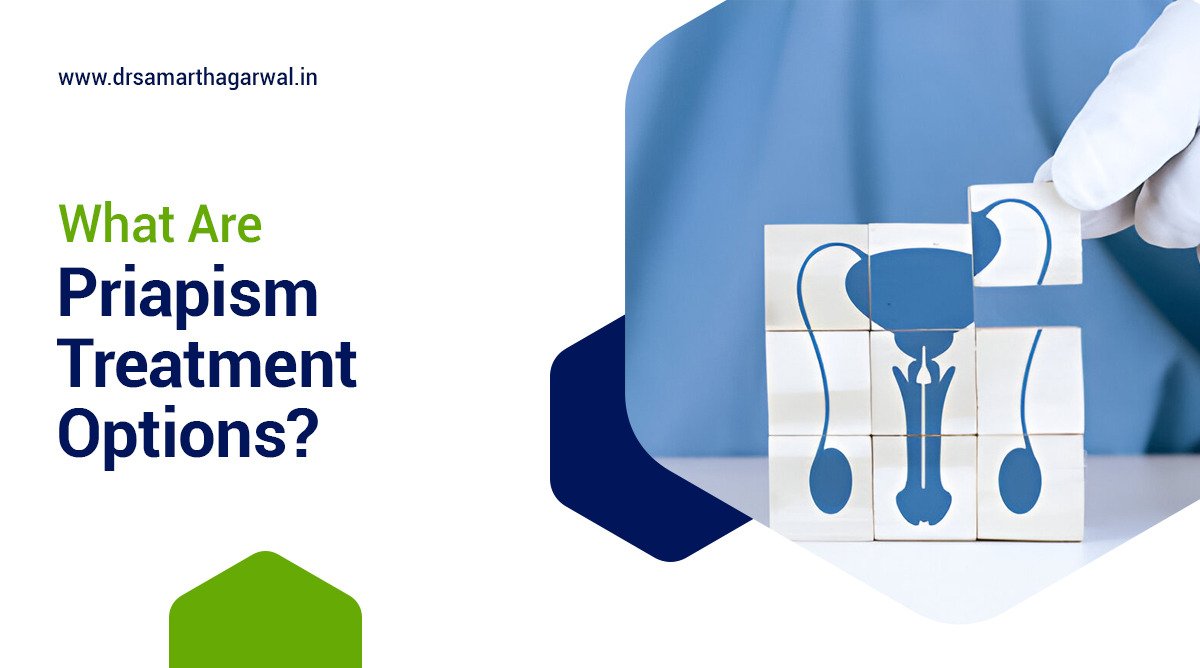Priapism is a condition characterized by prolonged and often painful erections that are not linked to sexual desire. A comprehensive understanding of this condition and its treatment options is essential for proper management. This article explores what priapism is, the different types of priapism, and the available treatment options, which include medications, non-surgical procedures, and surgical interventions. Important factors to consider when determining the appropriate treatment approach include the severity of the condition and individual patient preferences. This article aims to provide helpful information for anyone seeking knowledge, whether for themselves or someone else.
According to Howland, R. J.’s, ‘Daignault-Newton, S., & Blair, Y. A. (2022). The 10-year priapism experience: identifying clearer targets for intervention.’, the incidence of priapism has been reported to be as high as 5.3 per 100,000 patients and 8 encounters per 100,000 Emergency Department visits. The annual healthcare costs of priapism were estimated to exceed 120 million dollars, with about a quarter of patients experiencing readmission within one year. The study analyzed 396 priapism encounters in 95 unique patients, revealing that most cases (67%) were ischemic priapism, followed by recurrent ischemic priapism (17%) and non-ischemic priapism (14%). Interestingly, while the majority of patients (77%) presented only once, a small group of nine patients accounted for 294 encounters, highlighting the significant burden of recurrent cases. The median duration before seeking treatment was 4.5 hours, with transferred patients experiencing significantly longer durations (median 26 hours) compared to non-transfers (median 5.5 hours).
What is Priapism?
Priapism is a medical emergency characterized by a painful erection lasting more than four hours, unrelated to sexual stimulation. It poses serious health risks if left untreated.
Types and Characteristics of Priapism
Here are the key types and characteristics of priapism:
- Low-Flow Priapism (Ischemic Priapism)
- The most severe type is considered a medical emergency
- Blood collects and becomes trapped in penile tissue, leading to oxygen deprivation and potential tissue death
- It can be caused by sickle cell disease, certain medications, and neurological injuries
- High-Flow Priapism (Non-Ischemic Priapism)
- It is less painful, and often resolves on its own without medical intervention
- Typically occurs due to arterial blood leaking into the corpus cavernosum through a fistula, often resulting from pelvic trauma
- Stuttering Priapism
- Characterized by episodes of firm erections lasting several hours, which subside on their own
- May indicate underlying health issues, making medical consultation important regarding episode duration and frequency
Treatment Options for Priapism
Treatment options for priapism include medication-based treatments, non-surgical procedures like aspiration therapy, and surgical interventions such as shunt creation, aimed at relieving symptoms and preventing long-term complications.
Medication-Based Treatments
- Phenylephrine and dopamine are commonly used to constrict blood vessels and reduce prolonged erections.
- Effectiveness varies, and repeated doses or alternative therapies may be necessary.
Non-Surgical Procedures
- Aspiration therapy involves removing excess blood from the corpus cavernosum to relieve pressure and pain.
- Combination of aspiration and pharmacologic treatments may be employed for optimal results.
Surgical Interventions
- Surgical shunts divert blood flow from the penis to prevent permanent damage.
- Arteriovenous shunts offer a more permanent solution by reducing venous congestion.
- Risks include infection, bleeding, and potential erectile dysfunction.
Consulting a healthcare provider or urologist is essential for determining the best course of treatment and understanding the associated benefits and risks.
Factors to Consider in Choosing Treatment
Choosing the most appropriate treatment for priapism depends on the severity of the condition, the underlying causes—such as recreational drug use or sickle cell disease—and the patient’s personal preferences.
Therefore, it is essential for healthcare providers to evaluate each case individually.
Severity of Priapism
The severity of priapism significantly influences treatment options and outcomes. Painful erections lasting more than four hours are almost always indicative of ischemic priapism, which requires immediate medical attention to prevent further vascular injury and potential permanent side effects.
Understanding the differences between low-flow and high-flow priapism is crucial for determining appropriate treatment plans for patients. Low-flow priapism, often caused by sickle cell disease or trauma, necessitates prompt treatment to alleviate pain and restore normal erectile function.
In contrast, high-flow priapism is rare and typically occurs following arterial injury; it is seldom an emergency, allowing for alternative treatment options that may not require immediate intervention.
The prognosis for priapism varies widely depending on its cause and the speed of treatment, making it essential for healthcare providers to recognize the severity of the condition, as it directly impacts the likelihood of a successful resolution and the patient’s long-term health.
Underlying Causes and Conditions
Recognizing underlying conditions during the evaluation of treatment options for priapism is essential. Factors such as recreational drug use and chronic health conditions like sickle cell disease can exacerbate priapism and necessitate specific medical treatments tailored to the patient’s medical history.
Other contributing factors, including medications that affect blood flow as well as conditions such as diabetes and leukemia, should also be taken into account to create an effective treatment strategy.
Understanding these underlying conditions not only aids in alleviating the acute symptoms of priapism but also helps manage the root causes, ultimately improving overall treatment outcomes.
Patient Preferences and Risks
Patient preferences play a crucial role in decision-making for priapism treatment. Effective communication with healthcare providers about the risks and benefits of various treatments can alleviate anxiety and lead to more personalized care.
Understanding that individuals often experience different levels of anxiety regarding their health enables providers to present choices in a way that resonates with each patient. When patients perceive risks associated with different interventions, their decisions can change significantly; therefore, it is essential for healthcare providers to foster an open, two-way dialogue.
This allows providers to ensure that all relevant factors, including patient values and past experiences, are taken into account. Adopting a patient-centered approach enhances the shared decision-making process and builds trust, ultimately guiding patients toward the treatment that best meets their needs.

Contact Dr. Samarth Agarwal if you have any questions or concerns about priapism!




